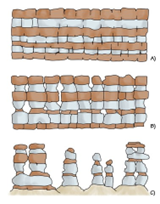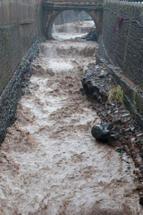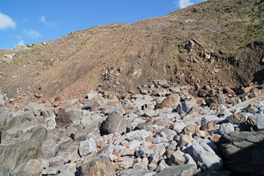
Knowledge and Skills Statement
The further explanation is designed to be a resource for educators that helps them better understand the topic their students are learning. Further explanations may be written at a more complex level than would be expected for students at the grade level.
Safety note: Eye protection should be worn when modeling wind erosion.
While weathering can be chemical or physical, in grade 4 the focus is on physical weathering by water, wind, or ice.
Weathering: the process of breaking down rock; caused by the forces of wind, water, ice, and human interaction
Erosion: the movement of rock and soil to new locations
Deposition: the process in which sediments from erosion come to rest in a new location
In grade 3, students were introduced to weathering as the breaking down of rock into smaller pieces. In grade 4, students should understand that erosion is the movement of broken pieces of rock away from their starting point and deposition is when the pieces settle in a new location. The foundation laid in discussing rapid and slow changes to the Earth's surface will provide context for discussing some of the abiotic factors that impact climate and ecosystem stability in later grade levels.
Image Source:
Research
Cheek, Kim A. “Washed Away!” Science and Children 50, no. 8 (April/May 2013): 52–56. http://www.jstor.org/stable/43176420.
Summary: In this article, the author provides examples of instructional strategies that can be used to teach students that weather plays a large role in changing the Earth's surface. Students can see examples of these changes every day. Because these changes often happen very slowly and on a large scale, models allow students to see how these changes take place. Students can start by recording examples of water changes on the earth in their everyday environment. They can take pictures of these examples of illustrating them in their science journals. These examples can be used to generate questions that can be tested. As a class, students can use soil and water to model these processes and find answers to their questions. Students must understand that models have limitations and are different from the natural erosion process.



